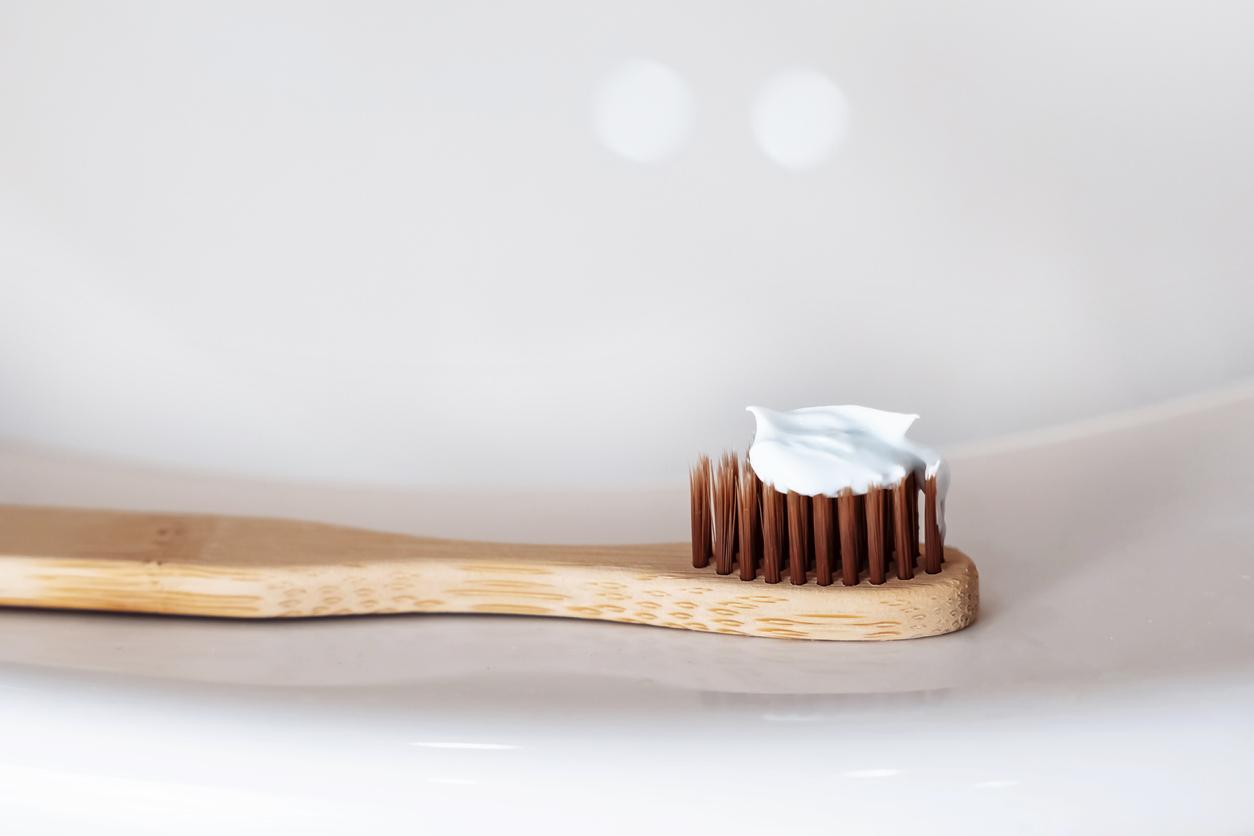Whitening toothpaste: what it should contain …
– A fluoride : Most often sodium or potassium. These minerals are the best anticaries, because they promote the remineralization of the enamel during acid attacks on the tooth. Dosage depends on age: less than 500 ppm (parts per million) in children under 6 years and up to 1450 ppm in adults.
– Antiseptics : Like triclosan and chlorhexidine, which have several effects: anti-inflammatory on the gum tissue; antibacterial in order to limit plaque formation ; anti-odor by stopping the degradation of volatile sulfur compounds.
– A surfactant : Foaming and detergent agent, sodium lauryl sulfate facilitates the detachment of dental plaque. Composed of food debris, this deposit very adherent to the enamel is conducive to the development of microorganisms. It can mineralize and turn into tartar in 36 hours.
– Whitening agents:They are pigments which act optically, in order to make the smile brighter with whiteness. Red, they accentuate the natural color of the gums and form a contrast with the teeth. Blue, they enhance the white of the enamel. Like small mirrors, synthetic mother-of-pearl reflects light and makes teeth brighter.
And also…
– Humectants, polyols (sorbitol and glycerol), which bind water molecules. They prevent toothpaste from air-drying and keep it fluid.
– Thickening agents, especially plant extracts, alginates or cellulose, to give consistency and smoothness to the texture.
– A sweetener , often saccharin for its sweet taste.
– A conservationist possessing antibacterial properties: benzoic acid is the most common.
>> To read also: Beauty: the 6 worst enemies of your white teeth
Whitening toothpaste: what to watch out for …
– Polishing agents : They promote the elimination of dental plaque and stains on teeth (coffee, tobacco…). Here, it is rather silica or sodium bicarbonate, sometimes abrasive. In case of dental hypersensitivity, it is better to seek advice from your dentist.
– Flavors and colorings:They can cause allergies or intolerances. The aromas give flavor and stimulate salivary secretion. Mint essential oil, refreshing, is not compatible with homeopathic treatment (unlike artificial flavoring). Natural or synthetic, dyes give toothpaste its color.
Toothpaste: what we ask
– To facilitate brushing thanks to a slightly foaming and above all “wetting” texture, which promotes the elimination of plaque.
– To have a creamy consistency that spreads well on the toothbrush, while offering a fresh and pleasant flavor.
– To be well tolerated by the gums and the oral mucosa.
– To be homogeneous, so as not to scratch the enamel but slightly abrasive to polish the surface.
Toothpaste: the focus of the dentist
Due to the nature and size of their polishing particles, some abrasive toothpastes are only used twice a week, against stubborn stains. The others can be used every day, if the enamel is not particularly fragile. The electric toothbrush, which removes two or three times more bacterial plaque, completes their whitening action.
Thanks to our expert Dr Christophe Lequart, dental surgeon and spokesperson for the French Union for Oral Health
>> To read also: Kit white teeth a beauty gesture without risk?
>> To read also: White teeth, fresh breath: natural solutions
















